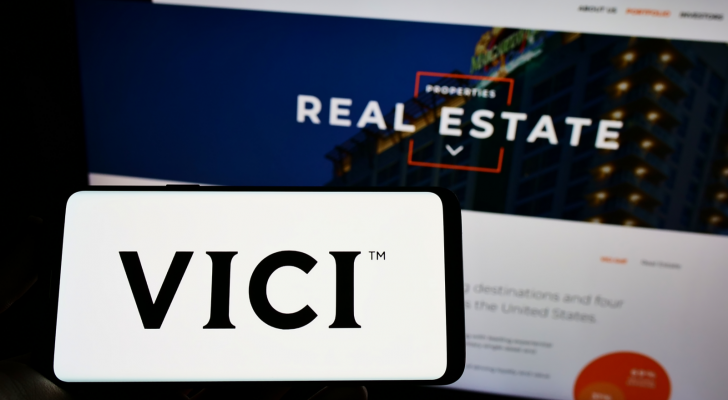3 S&P 500 Stocks to Own for the Next 50 Years
Survivorship bias is one of the biggest issues when selecting buy and hold stocks to own for the next 50 years.
What is survivorship bias?
Investopedia defines it as “the tendency to view the performance of existing stocks or funds in the market as a representative comprehensive sample without regarding those that have gone bust. Survivorship bias can result in the overestimation of historical performance and general attributes of a fund or market index”.
InvestorPlace - Stock Market News, Stock Advice & Trading Tips
In this article, I’m highlighting the opinion that many of the S&P 500 stocks in the current index might not be around 50 years from now. According to Statista, the average company (2020 data) spends 21.4 years in the S&P 500. That’s down from 36.4 years in 1980.
They generally leave because of two reasons. Some companies exit the index due to acquisition by another firm. The second reason lies in their financial situation diminishing to the point where they no longer meet the listing guidelines of the NYSE or Nasdaq.
So, in choosing three companies to make it 50-year mark, I select the following three long-term S&P 500 stocks.
VICI Properties (VICI)

Source: T. Schneider / Shutterstock
VICI Properties (NYSE:VICI) and Caesars Entertainment (NASDAQ:CZR) were separated in October 2017. Caesars became an asset-light casino operator. VICI became a real estate investment trust (REIT) with 19 casinos. It included Caesars Palace, 32 million square feet of space, 12,000 hotel rooms, and over 150 bars, restaurants, and nightclubs.
Fast forward to today. VICI has 49 casinos, 124 million square feet of space, 60,100 hotel rooms, and more than 450 restaurants, bars, and nightclubs. Obviously, its revenues and profits have grown exponentially.
While the REIT has done a masterful job growing its real estate holdings, investors aren’t nearly as smitten by its 4.5% interest rate as they once were. To reignite investor interest (its stock is up just 4% in the past year, less than one-quarter of the gains for the S&P 500), it’s pivoting to non-casino assets such as golf courses and other family-friendly real estate.
One of its non-gaming experiential loans the REIT made was in June 2022 to Cabot, a Toront0-based owner and operator of world-class destination golf resorts and communities. The $120 million delayed draw term loan (DDTL) was for Cabot’s Citrus Farms Resort in Florida. When the resort nears completion, it will convert the loan into an ownership position for some of the real estate, leasing it back to Cabot for 25 years.
So, plenty of opportunities will keep the REIT busy for decades.
Invitation Homes (INVH)

Source: TDKvisuals / Shutterstock.com
Invitation Homes (NYSE:INVH) is one of the country’s leading owners and operators of leasing single-family homes. As of March 31, it owned or managed 86,580 single-family homes in 16 urban markets across the U.S.
The company was founded in April 2012. It bought its first home in Phoenix. Today, it generates 10% of its revenue from single-family homes in the Phoenix area. The vertically integrated company went public on Jan. 31, 2017, selling 77 million shares at $20. At the time, it had nearly 50,000 homes.
Debate ensues about the contribution companies like Invitation make to rising housing prices and rental rates. However, given the housing shortage, anything these companies can do to alleviate some of the stresses on America’s housing stock is probably good.
In 2022, the company invested $250 million in Pathway Homes, a new company that works with customers to identify homes they would lease and eventually buy. In addition to providing capital to purchase homes, Invitation will provide its technology platform for Pathway and maintenance services for the homes leased by prospective future buyers.
Both buy-to-rent and built-to-rent have become big real estate markets due to the U.S. housing shortage.
With five large institutional investors owning 51% of its stock, I could see this business sticking around for 50 years or more.
Organon & Co. (OGN)

Source: Shutterstock
Organon & Co. (NYSE:OGN) is a women’s healthcare company that focuses on providing solutions through three operating segments. Women’s health (25% of revenue), whose products include Nexplanon, a progestin-only contraceptive implanted in a woman’s upper arm. It protects against pregnancy for three years. The other two OGN segments are Biosimilars (8% of revenue) and Established Brands (67% of revenue).
Organon recently announced that it is working with CAF, the Development Bank of Latin America, to help achieve the United Nations Sustainable Development Goals for Latin America and the Caribbean.
“Across the globe, tremendous gaps exist in women’s health that can potentially prevent women and thus economies from achieving their full potential,” stated the June 7 press release.
“Sustainable financing can advance progress in women’s health by mobilizing capital towards initiatives that might not otherwise receive adequate support like increasing access to sexual and reproductive health education and healthcare services.”
Organon has a vested interest in improving women’s lives in these regions. So, it’s no different than all the money thrown at healthcare initiatives by Big Pharma. Organon is in a different league at a market capitalization of $5.3 billion. I’ll watch with interest to see if it can make a difference.
Of the three, Organon has the highest risk. At the end of March, its debt was $8.7 billion or 1.6x its market cap. Its annual interest payments on the debt will be approximately $510 million. Therefore, this is essentially 25% of its projected adjusted earnings before EBITDA for 2023.
On the date of publication, Will Ashworth did not have (either directly or indirectly) any positions in the securities mentioned in this article. The opinions expressed in this article are those of the writer, subject to the InvestorPlace.comPublishing Guidelines.
Will Ashworth has written about investments full-time since 2008. Publications where he’s appeared include InvestorPlace, The Motley Fool Canada, Investopedia, Kiplinger, and several others in both the U.S. and Canada. He particularly enjoys creating model portfolios that stand the test of time. He lives in Halifax, Nova Scotia.
More From InvestorPlace
The post 3 S&P 500 Stocks to Own for the Next 50 Years appeared first on InvestorPlace.
